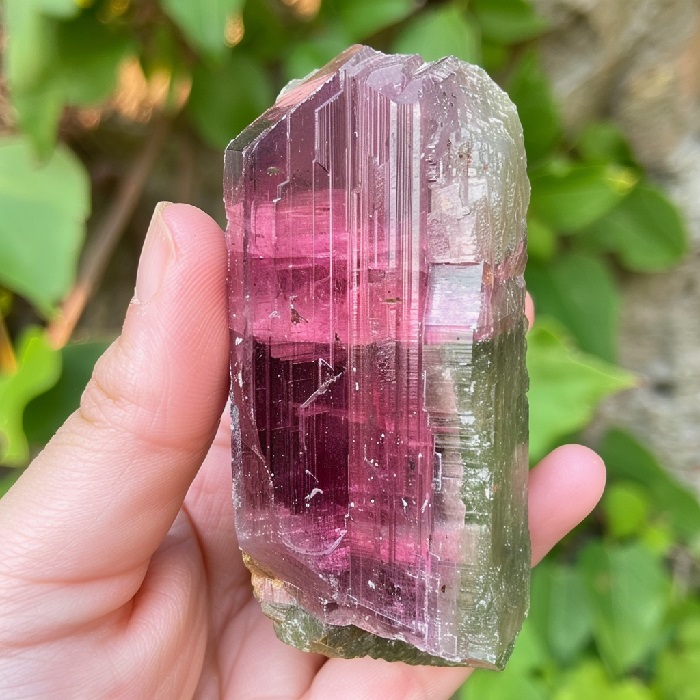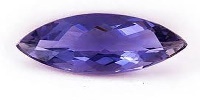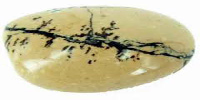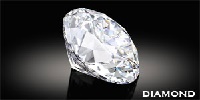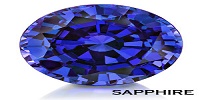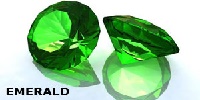Tourmaline Mining
DESCRIPTION:
Tourmaline is a crystal silicate mineral compounded with elements such as magnesium, aluminum, iron, sodium, and lithium. It is classified as a semi-precious stone and comes in a wide variety of colors. The name comes from the Sinhalese word "turamali" or "toramalli," which originally referred to various gemstones found in Sri Lanka.
FORMATION:
Tourmaline undergoes a complex geological formation process driven by heat, pressure, and chemical interactions. While specifics can vary by geological context, here's a general outline of how tourmaline forms:
Igneous Stage:
Tourmaline's formation typically initiates with magma cooling and solidifying deep within the Earth's crust. This process results in the formation of igneous rocks like granite, pegmatite, and volcanic rocks. The presence of essential chemical elements and minerals in the magma is crucial for the subsequent creation of tourmaline.
Hydrothermal Stage:Following the igneous phase, tourmaline formation progresses during hydrothermal activities. Hot fluids enriched with various elements such as boron, lithium, and other constituents required for tourmaline development flow through fractures and cavities within adjacent rocks. These fluids often originate from the cooling and solidification of magma.
Metamorphic Stage:As hydrothermal fluids permeate through rocks, they encounter regions undergoing metamorphism. Metamorphic processes occur when rocks experience alterations in temperature, pressure, and chemical composition due to geological forces. During metamorphism, these fluids interact with surrounding minerals, exchanging ions and elements essential for fostering the growth of tourmaline crystals.
Crystallization and Growth:Within these hydrothermal fluids, favorable conditions arise for the amalgamation of elements necessary for tourmaline crystal formation. Boron, aluminum, silicon, and various trace elements combine under specific temperature and pressure conditions provided by the fluids. As the fluids cool and pressure dynamics shift, tourmaline crystals begin to precipitate within fractures, voids, or along the interfaces of host rocks.
The precise composition of surrounding rocks, the availability of boron and other crucial elements, as well as the temperature, pressure conditions, and duration of the hydrothermal process, collectively influence the color and distinctive characteristics exhibited by tourmaline crystals upon formation.
TOURMALINE MINING PROCESS:
Tourmaline is typically extracted using methods like open-pit or underground mining, employing both manual and mechanized techniques depending on the site. After extraction, rough tourmaline undergoes sorting, grading, and shaping by skilled lapidaries to produce faceted gems, cabochons, or beads.
Due to the demand for certain colors, ethical concerns have arisen, prompting the gemstone industry to advocate for responsible sourcing and fair trade practices to ensure sustainable mining and ethical supply chains for tourmaline and other gemstones.
TOURMALINE MINING COUNTRIES:
Tourmaline is widely distributed across the globe, with notable sources including:
-
Brazil:
Major production centers in Minas Gerais and Bahia yield a variety of colors, including the prized Paraíba tourmalines known for vivid blues and greens.
Sri Lanka:Historically renowned from regions like Ratnapura and Elahera, Sri Lanka produces tourmalines in hues ranging from pink and green to blue.
Nigeria:Particularly in Oyo State, Nigerian tourmalines are celebrated for their vibrant greens, pinks, and blues.
Madagascar:Various regions like Antsirabe and Ilakaka produce a diverse array of tourmaline colors, including vivid pinks and greens.
Afghanistan and Pakistan:The Panjshir Valley in Afghanistan is noted for pink and red tourmalines, while Pakistan's northern areas produce greens, blues, and pinks.
United States:States like California, Maine, and New York are recognized for high-quality tourmalines in colors such as pink, green, and blue.
PHYSICAL PROPERTIES :
Chemical Composition : Tourmaline is a complex silicate mineral with a general formula(Na,Ca)(Mg,Fe,Al,Li)3Al6(BO3)3Si6O18(OH,F)4. It includes elements such as sodium (Na), calcium (Ca), magnesium (Mg), iron (Fe), aluminum (Al), lithium (Li), boron (B), silicon (Si), oxygen (O), and hydroxyl (OH).
Crystal System : Tourmaline crystallizes in the trigonal system.
Hardness : The hardness of tourmaline ranges from 7 to 7.5 on the Mohs scale, making it relatively durable and suitable for use in jewelry.
Density : The specific gravity of tourmaline varies depending on its composition and can range from approximately 2.82 to 3.32.
Color : Tourmaline is renowned for its wide range of colors, including black, brown, pink, red, green, blue, and multicolored varieties.
Luster : It typically exhibits a vitreous (glass-like) luster.
Transparency : Tourmaline can be transparent to opaque, depending on its clarity.
Cleavage : Tourmaline has poor to indistinct cleavage, meaning it tends to fracture rather than cleave cleanly along planes.
Fracture : It displays a conchoidal fracture, similar to glass, which means it breaks with smooth, curved surfaces.
Optical Properties : Tourmaline is often dichroic, meaning it can exhibit different colors or shades of the same color when viewed from different angles.
Electrical Properties : Certain types of tourmaline, such as the elbaite variety, can develop electric charge when heated or subjected to pressure (piezoelectricity) or when exposed to changes in temperature (pyroelectricity).
Understanding these physical properties helps gemologists and jewelers identify and classify different types of tourmaline and determine their suitability for various applications, including gemstone jewelry and industrial uses.
NATURAL OCCURRENCE:
Sri Lanka
South West Africa
Afghanistan
USA (California, Maine)
Brazil
Madagascar
Tanzania
Kenya
UK Rhodesia
Nepal
Mozambique
Pakistan
Namibia and Mexico
AVAILABLE COLORS:
Black Tourmaline (Schorl)
Blue Tourmaline (Indicolite)
Green Tourmaline
Pink Tourmaline (Rubellite)
Red Tourmaline (Rubellite)
Watermelon Tourmaline
Yellow Tourmaline
Colorless Tourmaline (Achroite)
Multicolored Tourmaline
